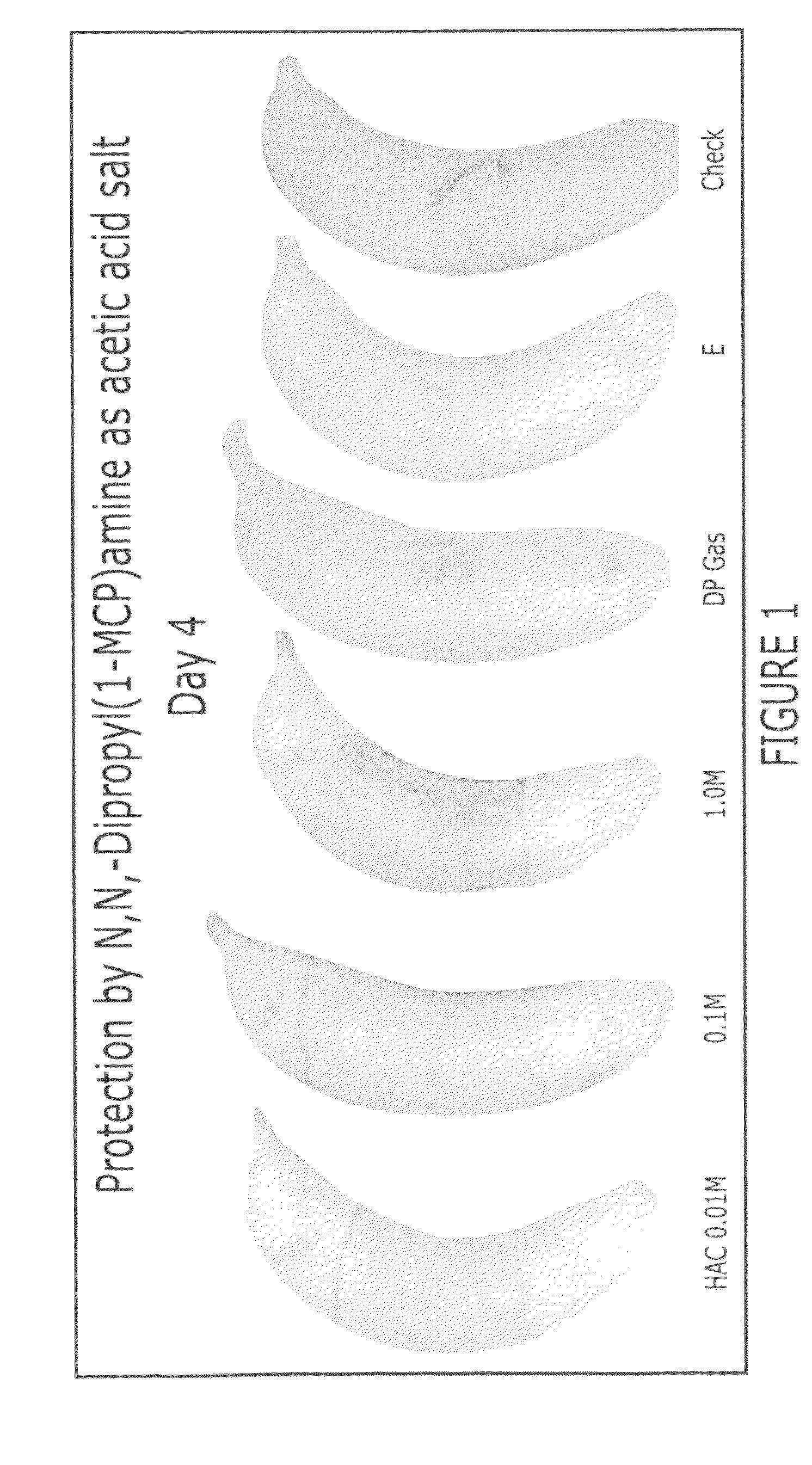Methods of inhibiting ethylene responses in plants using cyclopropene amine compounds
a technology of cyclopropene amine and ethylene, which is applied in the field of methods of inhibiting ethylene responses in plants, can solve the problems of continuous exposure and diffused binding site, and achieve the effect of prolonging the effective life-prolonging amount of cyclopropene amine compounds, prolonging the storability and shelf life of produce, and prolonging the life of cut flowers
- Summary
- Abstract
- Description
- Claims
- Application Information
AI Technical Summary
Benefits of technology
Problems solved by technology
Method used
Image
Examples
examples
Materials and Methods
1. Preparation of Compounds
A. The preparation of cyclopropene, N,N-dimethyl-(1-cyclopropenylmethyl)amine
[0087]The cyclopropene, N,N-dimethyl-(1-cyclopropenylmethyl)amine was prepared from 2-bromo-3-(N,N-dimethyamino)propene. 2-bromo-3-(N,N-dimethyamino)propene was synthesized from 2,3-dibromopropene and dimethylamine by a modified procedure of Corey, et al. (1971) (See E. J. Corey, et. al., The synthesis of racemic α-trans- and β-trans-bergamotene, J. Am. Chem. Soc., 93, 7016-7021 (1971).) 2-bromo-3-(N,N-dimethyamino)propene reacted with bromoform in the presence of 50% NaOH and subsequently reacted with methyllithium to provide the cyclopropene N,N-dimethyl-(1-cyclopropenylmethyl)amine by using the procedure of Al Dulayymi et al. (1996 and 1997) and (Al Dulayymi et al., 1997) (See Al Dulayymi J. R., et al., Structure based interference with insect behaviour-Cyclopropenes analogs of pheromones containing Z-Alkenes, Tetrahedron, 52, 12509-12520 (1996); Al Dulayym...
PUM
| Property | Measurement | Unit |
|---|---|---|
| pKa | aaaaa | aaaaa |
| pKa | aaaaa | aaaaa |
| time | aaaaa | aaaaa |
Abstract
Description
Claims
Application Information
 Login to View More
Login to View More - R&D
- Intellectual Property
- Life Sciences
- Materials
- Tech Scout
- Unparalleled Data Quality
- Higher Quality Content
- 60% Fewer Hallucinations
Browse by: Latest US Patents, China's latest patents, Technical Efficacy Thesaurus, Application Domain, Technology Topic, Popular Technical Reports.
© 2025 PatSnap. All rights reserved.Legal|Privacy policy|Modern Slavery Act Transparency Statement|Sitemap|About US| Contact US: help@patsnap.com



